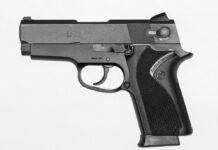
The wheel gun refuses to die, and why should it? Wheel guns are plenty of fun, offer you super powerful calibers, and when you shrink one into a J frame, you get a simple, easy to carry gun with 5 to 6 rounds of vermin dissuasion. There are lots of J frames or snub nose revolvers out there, and I personally think the best currently on the market is the Ruger LCR. Specifically the Ruger LCR 9mm.
Yep, I think the best snub nose on the market is a 9mm J-frame type. Hear me out before you break out the pitchforks.
What Makes the LCR So Great?
The LCR takes a page out of Glock’s playbook and adds a dose of polymer in the snub nose revolver. Why? Well, because polymer is lighter and more affordable than metal. When you build an air-weight-style revolver, you are stuck using expensive metals like titanium or scandium, which skyrockets the price.

Well, polymer can do the same thing without driving the price up. To be completely fair, though, the scandium models can trim a little more weight. A scandium frame S&W weighs around 12 ounces, and the LCR 9mm weighs 17 ounces and some change.
Your average S&W 640 weighs 22.1 ounces, so the Ruger LCR 9mm does trim some serious weight from your average revolver. The Ruger LCR utilizes a steel barrel insert and steel cylinder, as well as metal internals. The main difference is the reinforcement of polymer versus using more steel.
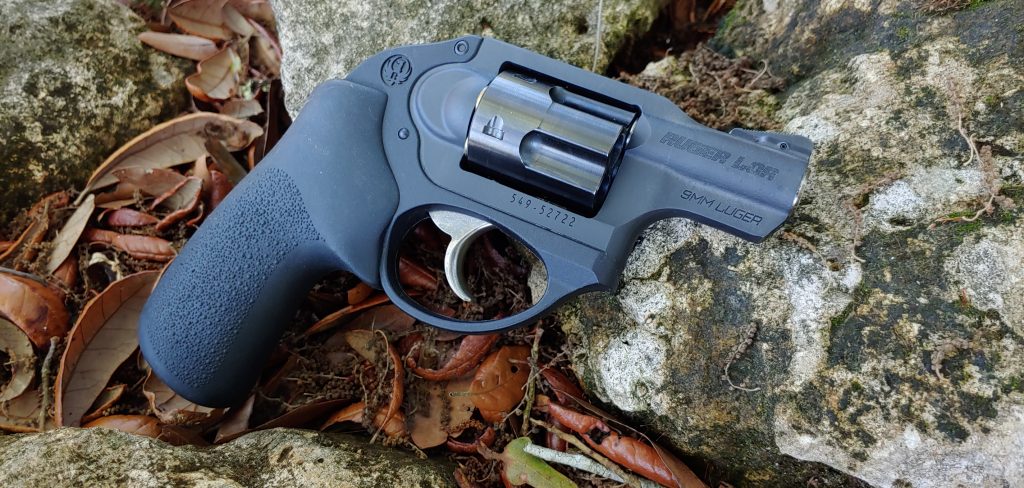
It’s also one of the more affordable revolvers on the market. The plain jane Ruger LCR in 38 Special might just be the cheapest mainline brand-name revolver on the market.
Holy crap did Ruger redefine what a double-action trigger could be in a revolver. Why it took this long to see a stock double-action trigger this crisp, I’ll never know. It rolls and flows with little effort. It’s a long trigger pull but super smooth and lightweight. Dry firing shows just how easy it is to keep the front sight from moving while shooting.
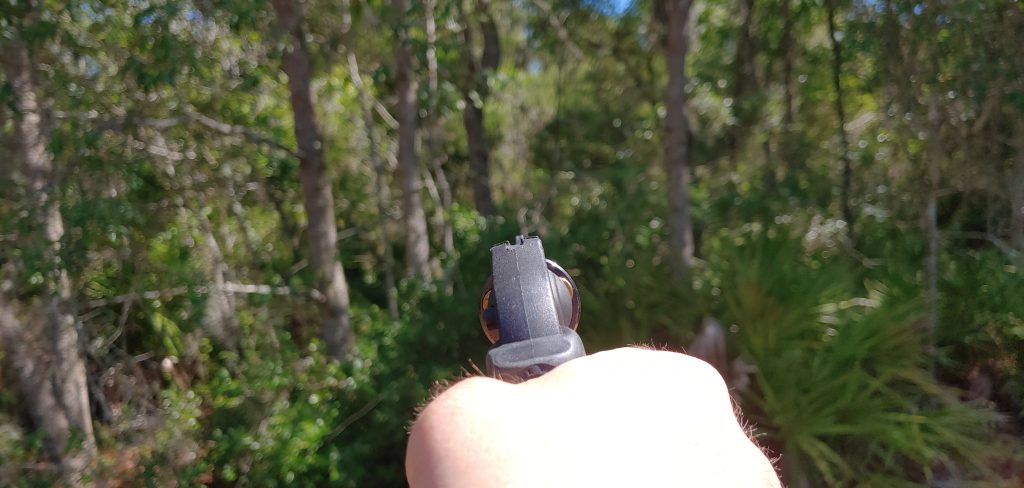
But in 9mm?
Yeah, I know. It’s not a traditional revolver caliber. It’s that got-darned millennial 9mm round created in 1902 by one of them pesky Germans. It’s not a traditional revolver round, but does that make it a poor revolver round?
Not to me.
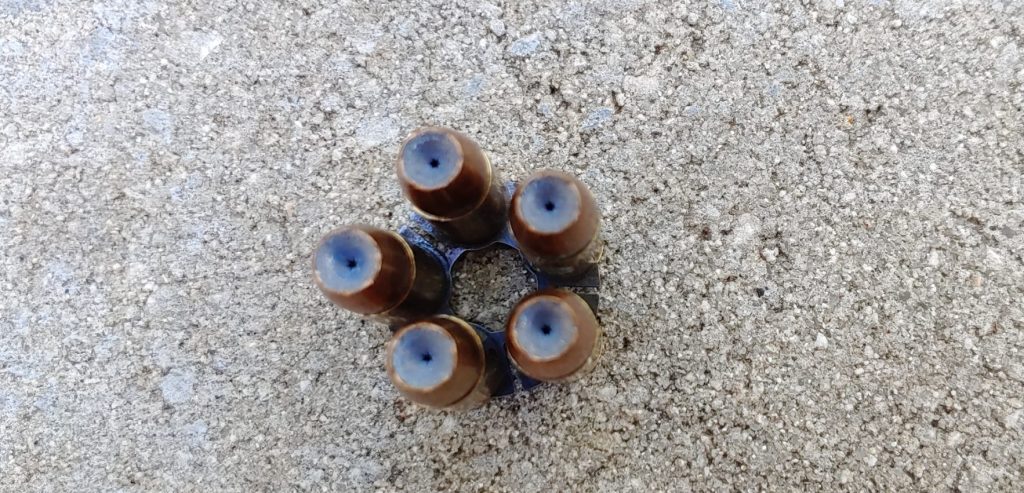
Modern self-defense revolvers utilize either the 38 Special round or the 357 Magnum load. 44 Special and 327 Federal Magnum are competent calibers but uncommon, to be fair. Both of those rounds cost significantly more than the 9mm. Right now, all ammo is expensive, but in general, 9mm is much cheaper than 38 Special and 357 Magnum.
9mm also offers you way more defensive ammunition options. You can get light recoiling 90-grain reduced loads, 115 grain, 124 Grain +P loads all the way to heavy 147 grain subsonic rounds. Lots and lots of options, way more than 38 Special and 357 Magnum.
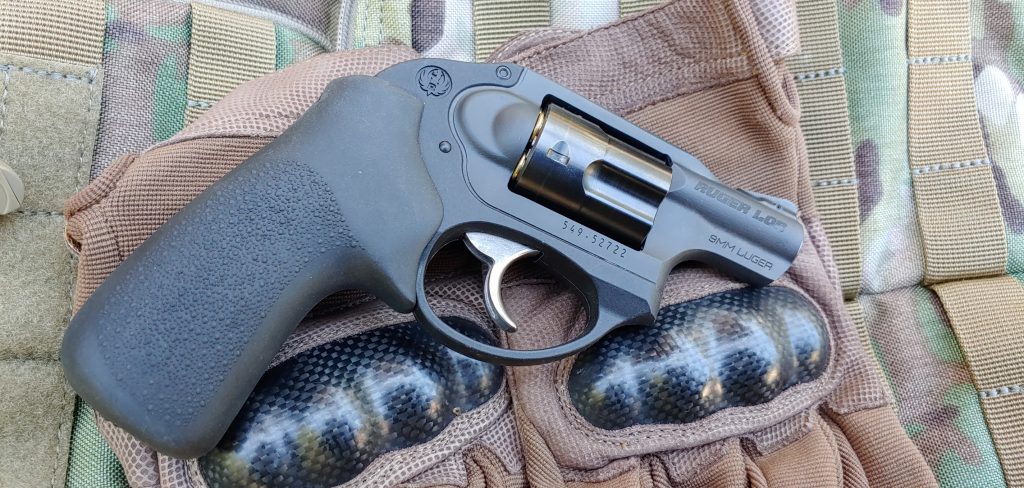
9mm defensive loads provide more oomph and better ballistic results than regular 38 Special loads. It outperforms the old 38 Special substantially. 38 Special can generate 264 foot-pounds of force with a 147-grain projectile, but 9mm can put out 365 foot-pounds from a 124-grain projectile.
357 Magnum kicks 9mm’s butt ballistically, sure, but in the realm of snub-nose revolvers like the Ruger LCR, the 9mm makes sense. 357 Magnum from a snub nose creates some serious recoil for the end-user, on top of concussion and tons of muzzle flash. The 9mm delivers excellent performance without the flash, recoil, and concussion.
Handling the Ruger LCR
The Ruger LCR is a blast to shoot. The smooth trigger allows me to direct 9mm rounds wherever I want them. I can hit a 10-inch gong at 30 yards consistently, even with nothing more than the front sight.
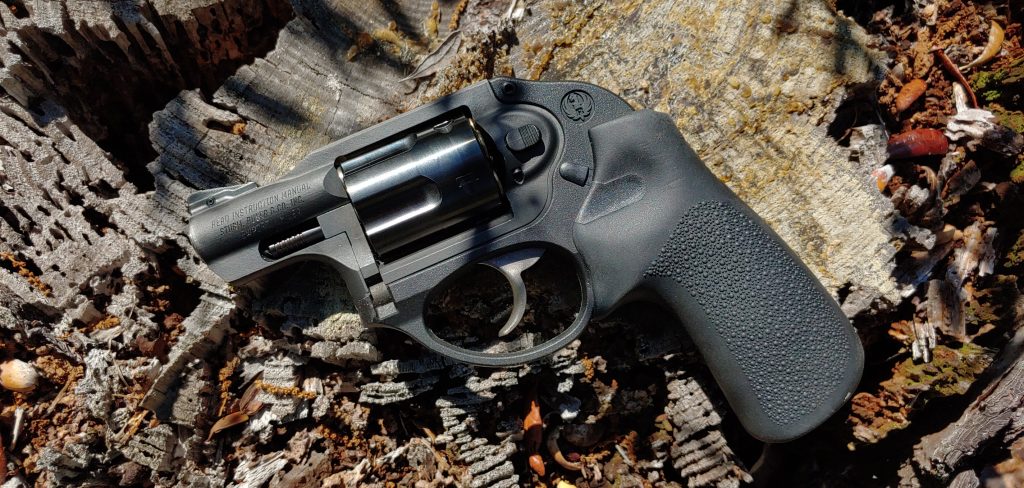
Controlling the weapon is easy, and I can make fast and accurate follow-up shots. With a good grip, the gun bucks only a bit, and I put two rounds into the heart and lung area in under 1.25 seconds from ten yards.
One thing I didn’t like was the small grips Ruger included with the LCR. I get why it makes the gun small, but small grips don’t agree with big hands. I swapped them for some Hogue’ boot’ grips and never looked back.
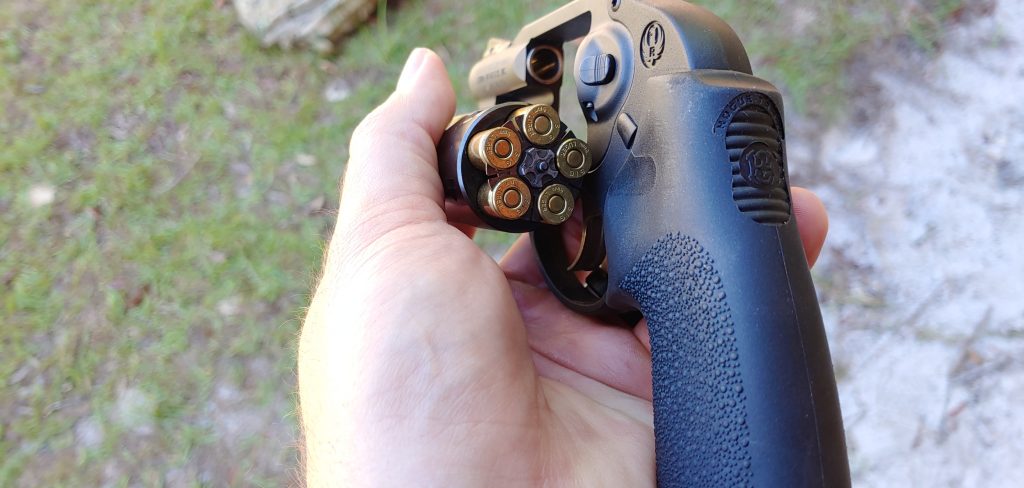
After I drop five rounds of 9mm into a target, I have no problems popping the cylinder open and dropping the five empties with one fluid motion. Popping another loaded moon clip in the Ruger LCR verges on being as fast as reloading a semi-auto pistol.
No Such Thing as a Free Lunch
In terms of reliability, you get a very slightly mixed bag. 9mm projectiles are not meant to be housed in a revolver’s cylinder. When they are tossed into revolvers, they get the full force of the gun’s recoil. This can result in a projectile jumping the crimp.
Revolver rounds feature a good strong crimp to withstand this force. 9mm rounds do not. This is not common and seems to only occur when you use heavier projectiles that generate more recoil. I’ve only had it happen once with a 147-grain JHP from Winchester. With 124 grain +P JHPs and 115-grain JHPs, it never occurred, and the same goes for any standard FMJ load.
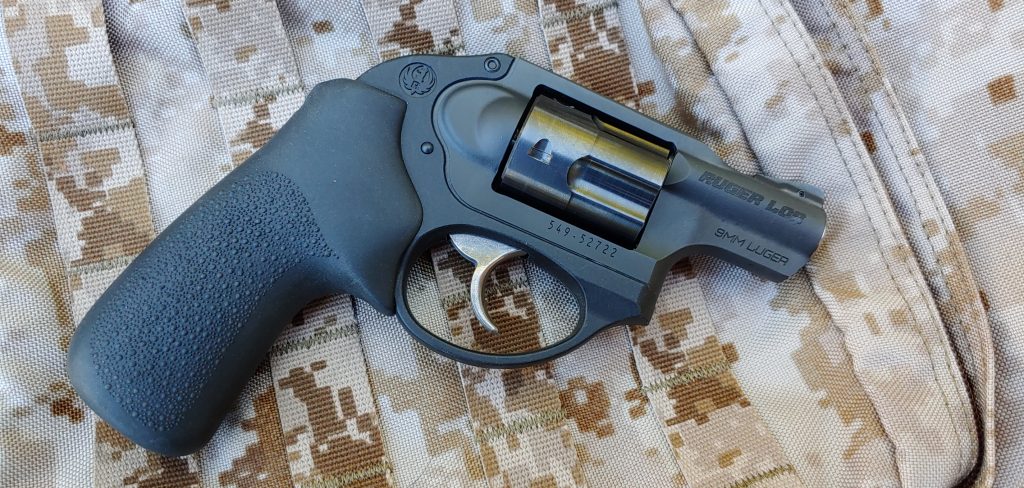
That’s a downside of the Ruger LCR in 9mm, and snub nose revolvers in automatic cartridges in general.
For fast and intuitive reloads, you’ll need moon clips to use the Ruger LCR. Without moon clips, you have to poke out each individual casing to reload. Moon clips are somewhat fragile and bend easily when force is applied. Luckily they tend to be cheap and easily replaceable.
Is the Ruger LCR 9mm The Future?
Maybe, but since revolvers guys tend to be purists, they cling to their traditional revolver cartridges. If you’re like me and just feel your collection isn’t complete without a revolver, then the Ruger LCR is likely for you. The Ruger LCR is a fantastic carry gun for the new revolver aficionado or for those who want a very spartan and capable gun. If you’re carrying something like the Ruger LCR, then you might as well get the best version of the gun and the best version, in my humble opinion, chambers 9mm rounds.


